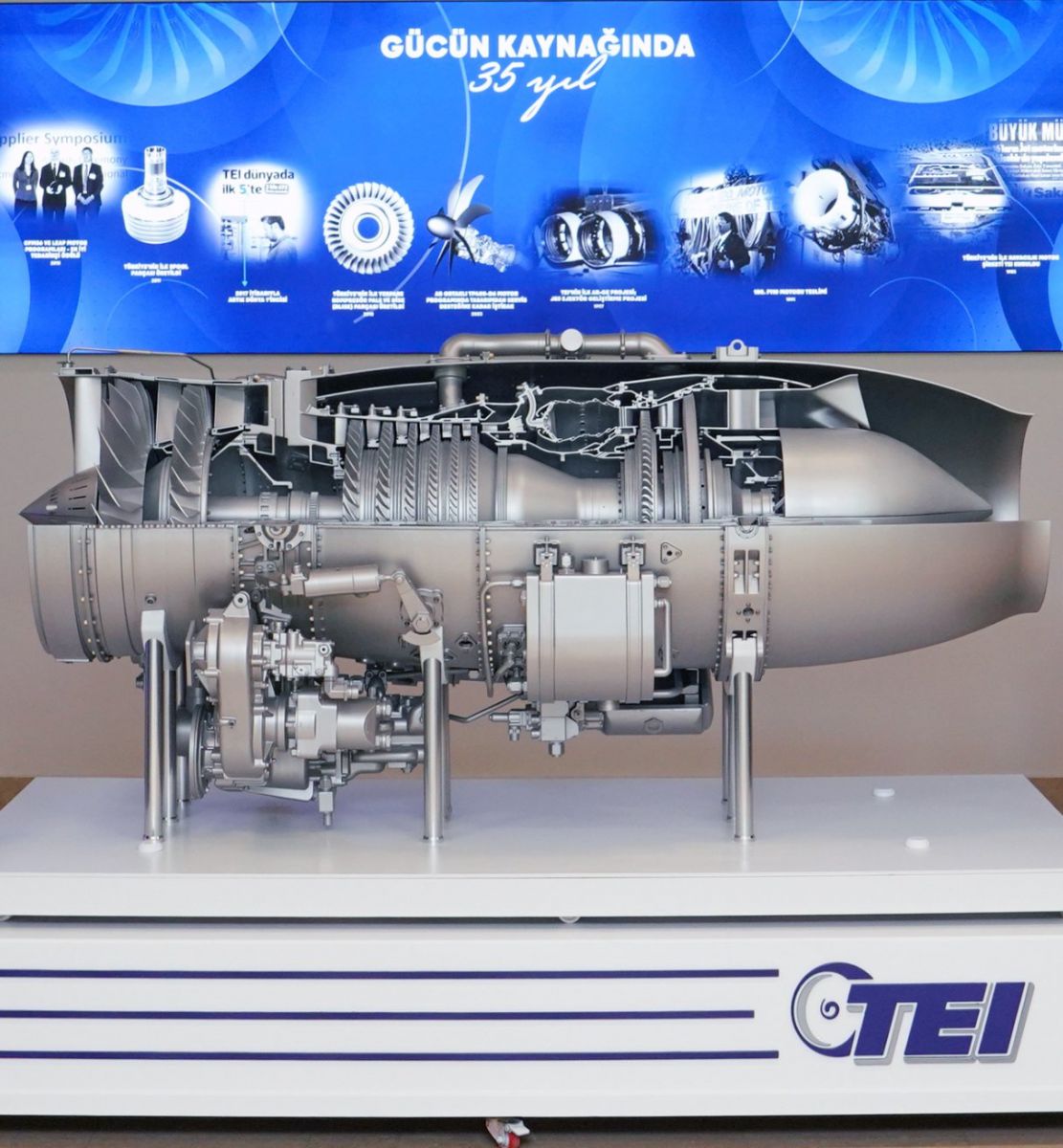Date: November 15, 2022

The TEI-TF6000 is a Turbofan Engine with a total length of 2,250mm, a width of 860mm, and a height of 1,100mm. According to the product brochure, it has a Specific Fuel Consumption value of 0.70 (lbf/lbf.s) and a bypass rate of 1.08 (SLS, ISA).
There is a 2-stage axial fan at the front of the engine (it rotates at the same speed as the Low-Pressure Turbine). Behind the axial fan are two separate air ducts, one for the air bypassing the engine core (bypass duct) and another for the air going to the core through the high-pressure compressor. The TEI-TF6000 engine is designed to produce a total of 6,000 lbf dry thrust, approximately 4,000 lbf with the core engine, and 2,000 lbf with the bypass stream. However, like the TEI-TS1400 turboshaft engine, the TEI-TF6000 is expected to generate slightly higher thrust than the initially designed level.
The low bypass TEI-TF6000 turbofan engine has a 6-stage axial compressor behind the 2-stage axial fan. Both fan and compressor stages are manufactured with 'blisk' technology. In other words, instead of having the blades manufactured separately and stacked on a disc, the compressor blades and the rotor disk are manufactured as a single piece.
The combustion chamber (through-flow type) is located behind the compressor stages. The pressurized air from the compressor is mixed with fuel in the combustion chamber, and the hot exhaust gas is later fed into the turbine, causing the turbine blades to rotate. Therefore, turbine blades must be manufactured with single-crystal technology to withstand high-pressure exhaust gas and operate at very high temperatures. TF6000 has a 1-stage High-Pressure Turbine (HPT) and a 1-stage Low-Pressure Turbine (LPT) behind the combustion chamber. The HP turbine rotates the compressor while the LP turbine rotates the fan. The hot air from the turbine is then mixed with the air from the bypass duct and is released from the nozzle at the back.
The Nozzle Guide Vanes (NVG) see the highest temperatures among the engine parts since the hot gases from the combustion chamber pass through them. Cooling of NGVs is extremely important to prevent the metal from melting and maintain its operating temperature. The NVGs are usually of hollow form and cooled by passing compressor delivery air through them to reduce the effects of high thermal stresses.
Designed in a modular way, the TEI-TF6000 turbofan engine also has an oil tank. It has a reserve oil level for the lubrication of the bearings. The oil and fuel pumps work with a starter generator connected to the gearbox.
While titanium is used in the cold section of the TEI-TF6000 engine (fan and compressor stages at the front), Nickel superalloy is used in the hot section (combustion chamber and turbine stages at the rear). The metal parts in the hot section are also covered with a thermal barrier coating made of ceramic.
TEI-TF6000 also features labyrinth seals at the back so that the circulating air inside the engine, which also cools the parts, does not escape outside. The exhaust is the last section of the engine. TEI continues to work on the afterburner design to be added behind the exhaust section. Thus, the afterburner will be developed and produced for the first time in our country for the TEI-TF6000 engine.
The production of parts for the TEI-TF6000 engine prototype has already started, and assembly work is expected to begin in the first half of 2023.
It is stated that the TEI-TF6000 can be converted into a turbofan engine comparable to F110-GE-129 by replacing the HP fan and LP turbine and rescaling the compressor, combustion chamber, and HP turbine. In our interview at the first day edition of SAHA EXPO Daily, President & CEO of TEI Prof. Mahmut AKŞİT also pointed out that if the radii of the relevant parts in the engine are expanded by 15 cm, the TEI-TF6000 can be converted into a turbofan engine similar to the F110-GE-129 which will also be used on MMU prototypes.